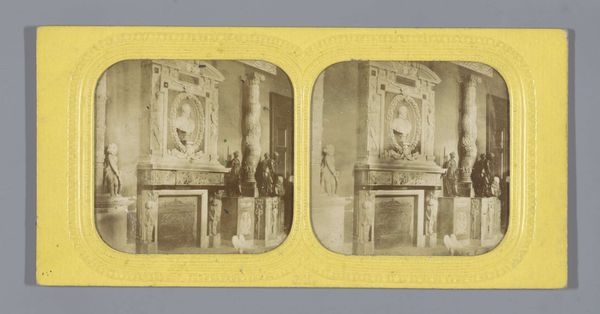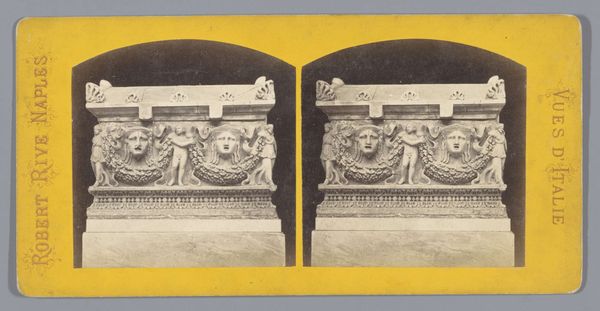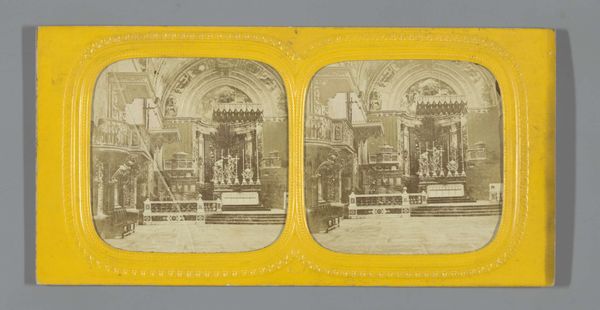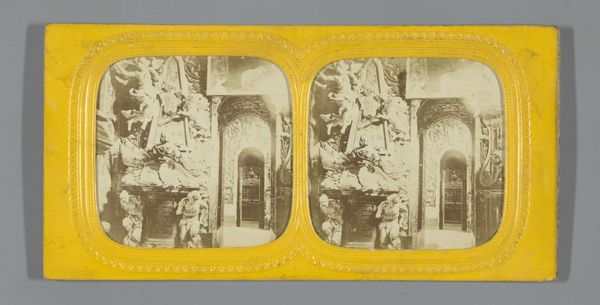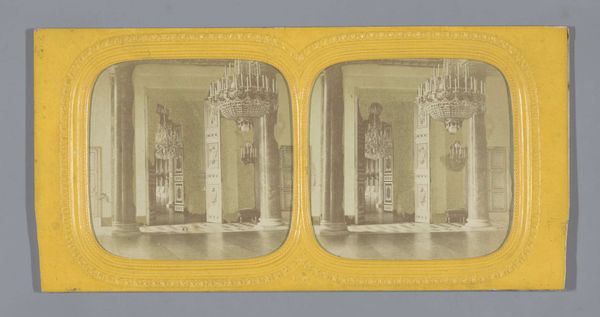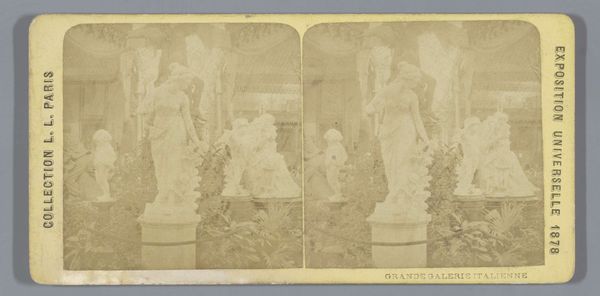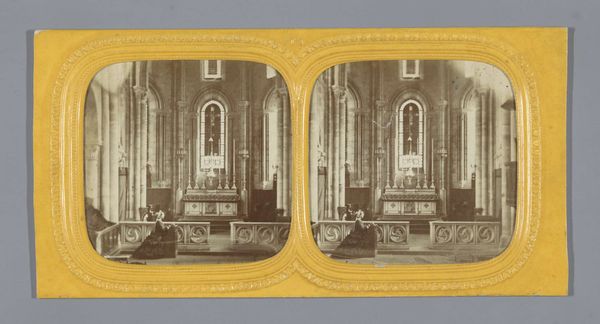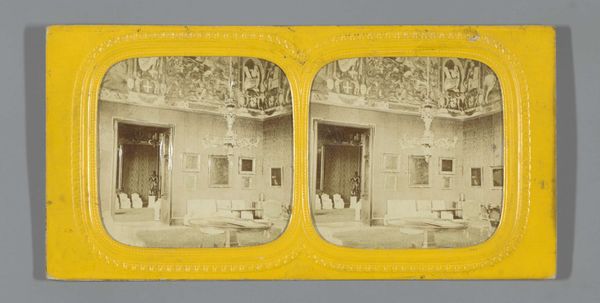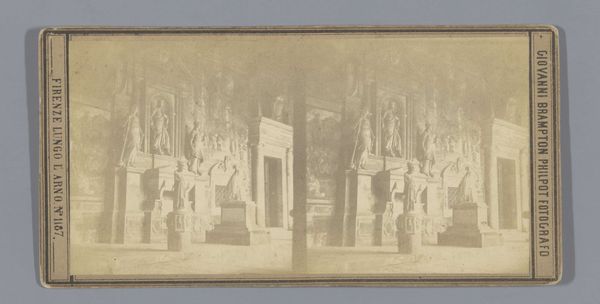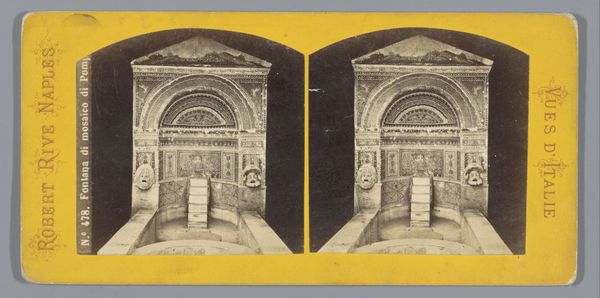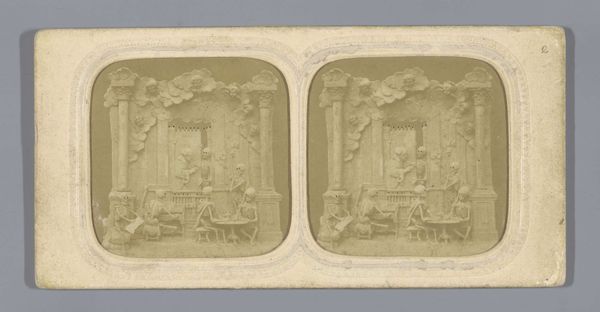
Grafmonument van Lodewijk Karel van Orléans in de kapel van Frankrijk van de Sint-Janscokathedraal in Valletta, Malta 1855 - 1875
0:00
0:00
Dimensions: height 88 mm, width 174 mm
Copyright: Rijks Museum: Open Domain
Editor: This gelatin-silver print from between 1855 and 1875 depicts the marble grave monument of Louis Charles of Orléans in Malta. It strikes me as very formal and somber. How do you interpret this work in the context of its time? Curator: It's a poignant reminder of how power structures influence even the ways we memorialize the dead. This image, presented as a stereograph, would have been consumed within a very specific cultural and political framework. How does the photographic reproduction of the marble monument impact its message, compared to experiencing the sculpture directly? Editor: That’s interesting. I hadn’t considered the reproduction aspect. The photograph seems to flatten the power dynamic, making it more accessible, while perhaps diminishing the intended awe. Curator: Exactly! This democratization of imagery, even of aristocratic iconography, occurred alongside shifts in social and political consciousness. Consider the context: Louis Charles, a member of the French aristocracy, memorialized in Malta, a location rife with colonial history. How do you see those layered contexts interacting in this image? Does it make you consider issues of class and imperialism? Editor: Yes, definitely. It highlights the pervasiveness of European power at that time, physically and symbolically. The choice to immortalize him in marble, and then further disseminate it through photography, reinforces a specific narrative. Curator: And who controls that narrative? That's a critical question. The act of photographing itself is an assertion of control, framing our understanding. Now, think about who this stereograph was marketed to? Editor: Likely the middle class, seeking to consume culture and knowledge. It really brings forward the problematic reality of profiting from even commemorating the deceased. Curator: Precisely. It's a lens through which we can analyze how even grief and remembrance become commodified and entangled with larger societal structures. Editor: I hadn't considered how the photographic medium itself could be a tool for solidifying power dynamics and disseminating particular narratives. Thanks, this was illuminating.
Comments
No comments
Be the first to comment and join the conversation on the ultimate creative platform.
